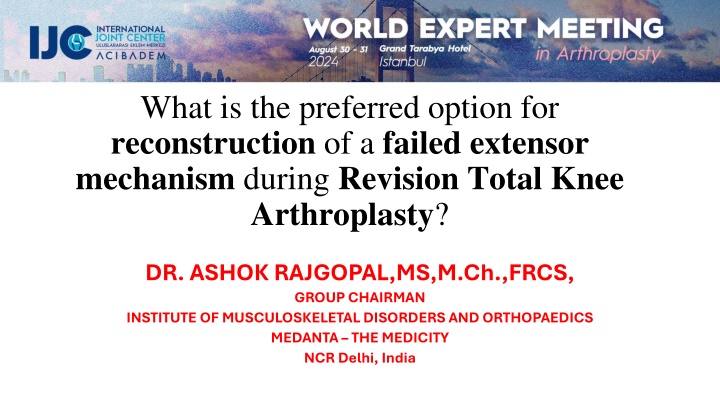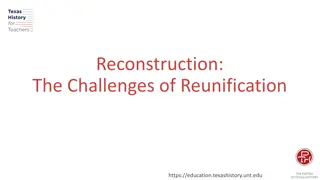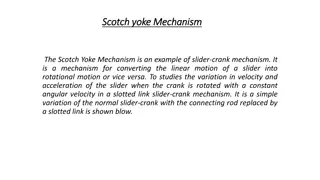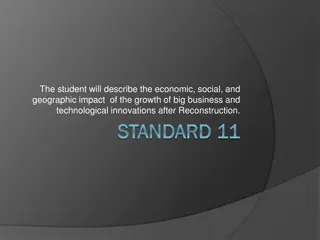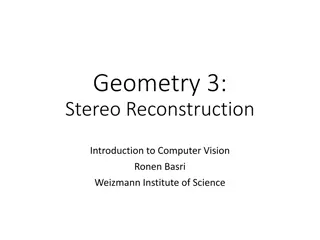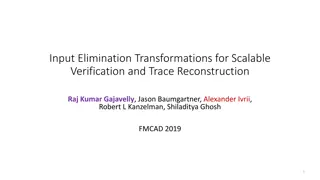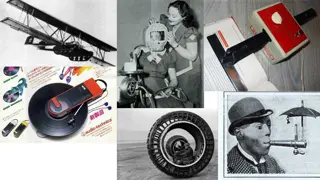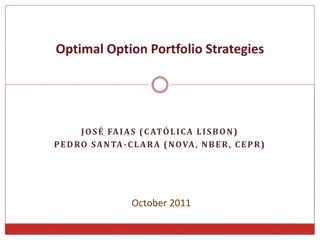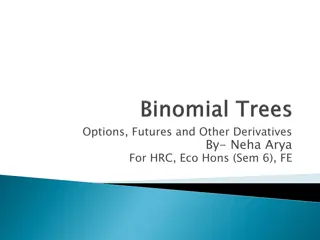Preferred Option for Reconstruction of Failed Extensor Mechanism in Revision Total Knee Arthroplasty
Chronic extensor mechanism failure in revision total knee arthroplasty is a challenging complication requiring appropriate reconstruction methods. This study analyzes 21 studies on chronic extensor mechanism failure, including 484 patients treated with different reconstruction approaches.
Download Presentation

Please find below an Image/Link to download the presentation.
The content on the website is provided AS IS for your information and personal use only. It may not be sold, licensed, or shared on other websites without obtaining consent from the author.If you encounter any issues during the download, it is possible that the publisher has removed the file from their server.
You are allowed to download the files provided on this website for personal or commercial use, subject to the condition that they are used lawfully. All files are the property of their respective owners.
The content on the website is provided AS IS for your information and personal use only. It may not be sold, licensed, or shared on other websites without obtaining consent from the author.
E N D
Presentation Transcript
What is the preferred option for reconstruction of a failed extensor mechanism during Revision Total Knee Arthroplasty? DR. ASHOK RAJGOPAL,MS,M.Ch.,FRCS, GROUP CHAIRMAN INSTITUTE OF MUSCULOSKELETAL DISORDERS AND ORTHOPAEDICS MEDANTA THE MEDICITY NCR Delhi, India
Dr. George A Komnos Prof. Dr. Ricardo Sousa Dr. Kevin Tetsworth Dr. Ashok Rajgopal Prof. Rhidian Morgan Jones Dr. Saksham Tripathi Dr. Jose Hernandez Hermoso
Why is this topic Important 1.Devastating and rare complication 2.Multiple modalitites of management 3.Availability of allograft/ synthetic grafts 4.High rates of complication and failure 5.Unpredictable outcomes
Literature Review/Process Concepts Failed extensor mechanism Text words Failed extensor mechanism Mesh Terms "patellar ligament"[MeSH Terms] OR ligamentum patellae [Text Word] Extensor mechanism disruption Quadriceps rupture "patella fracture"[MeSH Terms] Quadriceps fail* Patella* fracture Patella* insufficiency Patellar tendon failure Patellar tendon disruption
Reconstruction Reconstruction Repair Revision total knee replacement Revision total knee "arthroplasty, replacement, knee"[MeSHTerms] replacement revision total knee arthroplasty total knee arthroplasty total knee replacement TKA
Identification References removed (n = 1) Duplicates identified manually (n = 1) Studies from databases/registers (n = 446) PubMed (n = 446) Cochrane(n=1) PRISMA Studies screened (n = 446) Screening Studies excluded (n = 379) Studies not retrieved (n = 4) Studies sought for retrieval (n = 67) Studies assessed for eligibility (n = 63) Studies excluded (n = 36) Studies included in review (n = 27) Included
Chronic Extensor Mechanism Failure We analysed 21 studies for chronic extensor mechanism failure (> 3 months) 484 patients of chronic extensor mechanism failure treated with different methods of reconstruction were analysed. Chronic EMF EMA( Extensor mechanism allograft) 484 ( n) 192 Non EMA( Achilles tendon , Bone patellar tendon bone, Hamstring tendon) 53 Medial gastrocnemius flap 21 Synthetic Mesh / Tapes 218
Literature Outcomes For chronic extensor mechanism failure the EMA( Extensor Mechanism Allograft) group had a mean failure rate of 32.89%, ATA(Achilles Tendon Allograft) group of 15.38% and Bone Patellar -tendon bone allograft of 63% and synthetic grafts of 30.53%. For patellar tendon ruptures, Hamstring tendon/Quadriceps autograft have to date reported no failures for chronic patellar tendon reconstructions .
Acute Extensor Mechanism Ruptures We analysed 5 studies (41 patients) for acute failures (less than 3 months). Acute repair/reconstruction of Quadriceps Tendon- 1.Propylene mesh shows a 50% failure rate 2.Soft tissue augmentation with direct repairs had a 9% failure. Acute patellar tendon repair with hamstring (ST) graft or cable - UHMWPE cable reports showed no failure with average follow up of 42 months
Patellar Fractures 1 study (32 patients) fulfilled the criteria Operative management was opted if displacement was more than 3 mm w th extensor mechan smd srupt on 11% was reported for non-union and extensor lag (>30 degrees) following operative intervention. Fractures with displacement of <3 mm were treated conservatively yielding better outcomes and no post recovery lag with/without union
Predictors of Poor Outcomes Periprosthetic joint infection, chronic disruptions, and patellar tendon tears were associated with poor out-comes in extensor mechanism repair/reconstruction Constructs fixed n flexion gave poor outcomes
Recommendation Chronic extensor mechanism failure with attenuated tissues -EMA/Synthetic mesh. Chronic patellar tendon failure-Hamstring tendon (ST) with Quadriceps tendon autograft / Achilles tendon allograft. Acute patellar tendon failures Direct repair with augmentation. Acute quadriceps tendon failure Direct repair. Patellar fractures > 3mm displacement with clinical extensor mechanism failure -ORIF, < 3 mm displacement- conservative management.
Question: What is the preferred option for reconstruction of a failed extensor mechanism during revision total knee arthroplasty?
Recommendation Chronic extensor mechanism failure with attenuated tissues -EMA/Synthetic mesh. Chronic patellar tendon failure-Hamstring tendon (ST) with Quadriceps tendon autograft / Achilles tendon allograft. Acute patellar tendon failures Direct repair with augmentation. Acute quadriceps tendon failure Direct repair. Patellar fractures > 3mm displacement with clinical extensor. mechanism failure -ORIF, < 3 mm displacement- conservative management. F xat on n full extens on s emphas sed regardless of the graft cho ce
Rationale: We did a systematic review on this question. A total of 27 original studies discussing the outcomes of different modalities of extensor mechanism repair in revision TJA were included. 21 studies were evaluated for chronic failures , 5 for acute failures, and 1 for patellar fractures. The included studies (gathering the data of 484 patients of chronic ruptues, 41 patients of acute ruptures and 32 patients of patellar fractures) , covered the results of original articles till May 2024. This study demonstrated equivalent results between extensor mechanism allograft and synthetic mesh for chronic attenuated extensor mechanism ruptures. Chronic patellar tendon failures can be addressed with Hamstring tendon (ST) with Quadriceps tendon autograft / Achilles tendon allograft. Acute patellar tendon failures can be repaired with augmentation. Acute quadriceps tendon failures in small series have shown good outcomes with direct repair . Patellar fracture with < 3mm displacement should be conserved with Extensor mechanism is intact, if displacement is > 3 mm with EMF then ORIF.
Question What is the preferred option for reconstruction of a failed extensor mechanism during revision total knee arthroplasty? Response
Question What is the preferred option for reconstruction of a failed extensor mechanism during revision total knee arthroplasty? Response There are multiple options for reconstruction of chronic extensor mechanism of the knee. The reconstructive options include the use of synthetic mesh, hamstring tendon with quadriceps tendon autograft and Achilles tendon allograft. Acute failure of extensor mechanism should be repaired directly with autograft augmentation, whenever possible.
Question What is the preferred option for reconstruction of a failed extensor mechanism during revision total knee arthroplasty? Response Chronic extensor mechanism failure with attenuated tissues - Acute patellar tendon failures - Direct repair with augmentation. Acute quadriceps tendon failure Direct repair - EMA - Synthetic mesh. Chronic patellar tendon failure- Patellar fractures - - Hamstring tendon (ST) with Quadriceps tendon autograft / - Achilles tendon allograft. > 3mm displacement with clinical extensor. mechanism failure -ORIF, < 3 mm displacement- conservative management.
